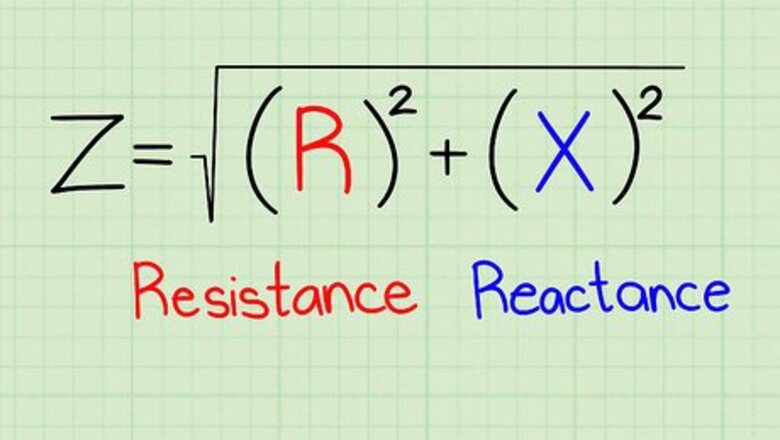
views
X
Research source
Consider the equation of a right triangle. So to calculate the angle you need to know your Cosine, Sine and Tangent laws. You also will need to know The Pythagorean Theorem ( c² = a² + b² ) for calculating the magnitudes of the sides of the triangle. You will also need to know what units each type of power is in. Apparent power is measured in Volt-Amps. True power is measured in Watts and your Reactive power is measured in the units called Volt-Amp-Reactive (VAR’s). There are several equations to calculate these and all will be covered in the article. You now have the basis of what you are trying to calculate.
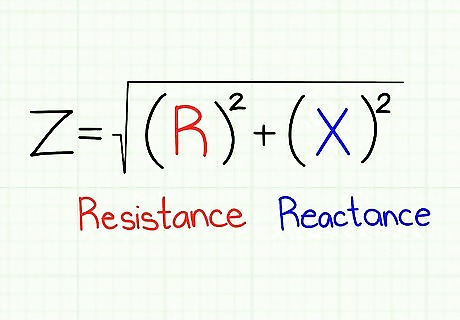
Calculate impedance. (Pretend as if impedance was in the same place as apparent power in the picture above). So to find impedance you need to use the Pythagorean Theorem c = √ (a² + b²).
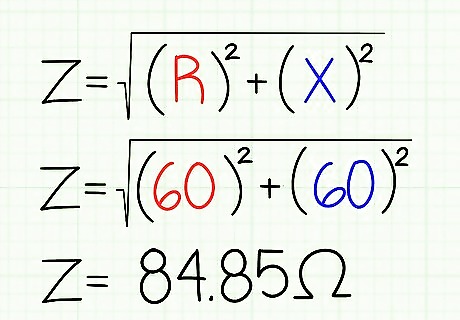
Therefore Impedance Total (represented as “Z”) is equal to Real Power squared plus Reactive power squared and then take the square root of the answer. ( Z = √(60² + 60²) ). So if you enter that into your scientific calculator you will receive an answer of 84.85Ω. ( Z = 84.85Ω )

Find your phase angle. So you now have your hypotenuse which is your impedance. You also have your adjacent side which is your true power and you have your opposite side which is your reactive power. So to find the angle you can use any the laws stated earlier. For example we use the Tangent Law which is the opposite side divided by the adjacent side (Reactive/True). You should have an equation that looks like this: (60/60 = 1)
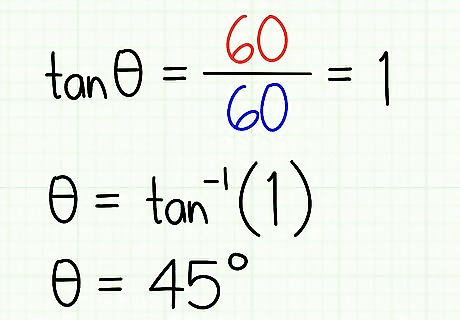
Take the inverse of the tangent and acquire your Phase Angle. The inverse tangent is a button on your calculator. So you now take the inverse tangent of the equation in the previous step and this will give you your phase angle. Your equation should look something like this: tan ‾ ¹ (1) = Phase Angle. So your answer should be 45°.
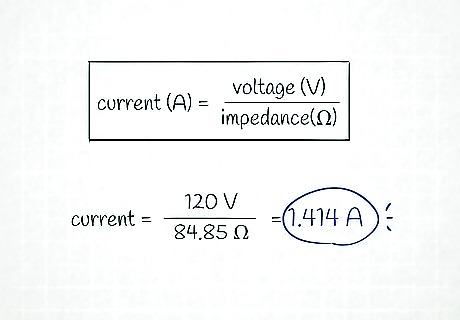
Calculate your total Current (Amps). Your current is in the units of amps also represented as an “A”. The formula used for calculating current is Voltage divided by Impedance which numerically looks like this: 120V/84.85Ω. You should now have an answer around 1.414A. ( 120V/84.85Ω = 1.414A )
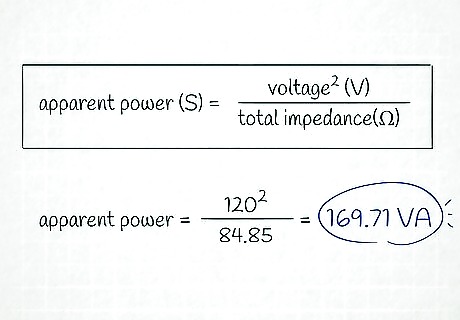
You must now calculate your apparent power which is represented as “S”. To calculate apparent power you do not need to use the Pythagorean Theorem because your hypotenuse was considered your impedance. Remembering that apparent power is in the units of Volt-Amps we can calculate apparent power using the formula: Voltage squared divided by your total impedance. Your equation should look like this: 120V²/84.85Ω. You should now get an answer of 169.71VA. ( 120²/84.85 = 169.71 )
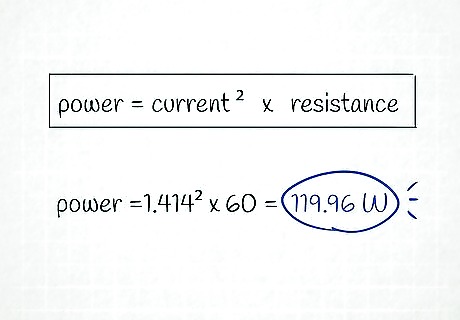
You must now calculate your true power which is represented as “P”. To calculate true power you must have found current which you did in step number four. True power which is in the units of a Watt is calculated by multiplying your current squared (1.414²) by the resistance (60Ω) in your circuit. Your equation should look like this: 1.414² x 60 = 119.96 W.

Calculate your Power Factor! To calculate your power factor you need the following information: Watts and Volt-Amps. You have calculated this information in the previous steps. Your wattage is equal to 119.96W and your Volt-Amps are equal to 169.71VA. The formula for your power factor, also represented as Pf, is Watts divided by Volt-Amps. You should have an equation that looks something like this: 119.96W/169.71VA = 0.71Pf This can also be expressed as a percentage therefore you multiply 0.71 by 100 giving you a power factor of 71%.




















Comments
0 comment